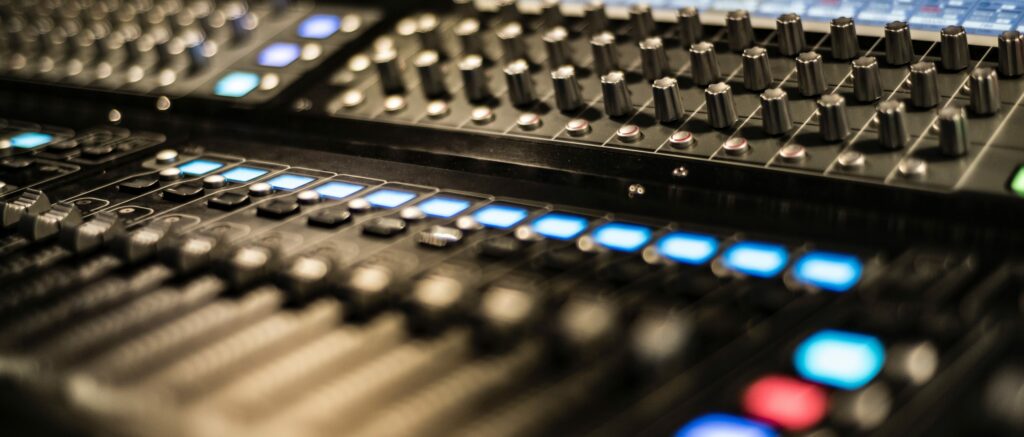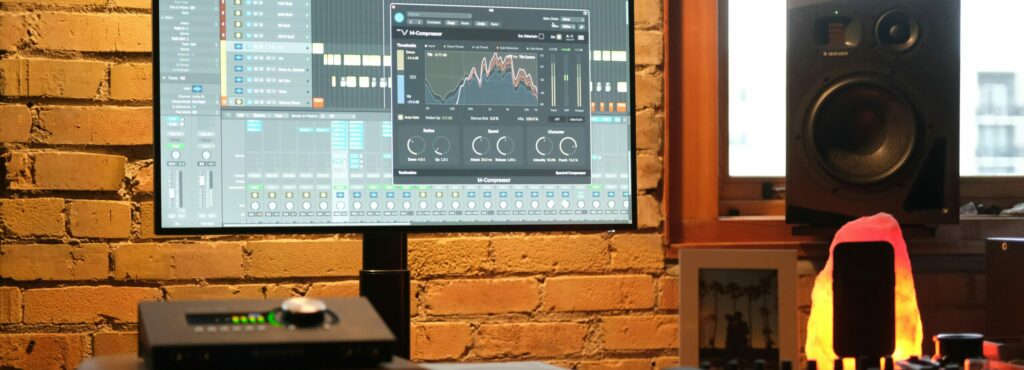Frequency analysis is a fundamental aspect of audio mixing that allows sound engineers to dissect and enhance their mixes. By understanding and identifying problematic frequencies, audio professionals can make informed decisions that lead to clearer, more polished sound. This section will explore the significance of frequency analysis in the mixing process, illustrating how it serves as a vital tool for enhancing audio quality. The insights gained from frequency analysis can lead to better EQ decisions, ultimately resulting in a more professional-sounding mix. As we delve deeper into the techniques and tools used in frequency analysis, it will become clear how mastering this skill can greatly benefit any audio production.
Table of Contents
- What is Frequency?
- Audio Frequency Analysis and Its Role in Audio Mixing
- Frequency Analysis Tools
- Frequency Analysis Techniques
- Balancing Frequencies in Your Mix
- Best Practices for Effective Frequency Analysis
- Conclusion
What is Frequency?
Frequency, in the realm of audio mixing, refers to the specific pitches of sound that are produced by musical instruments or vocals. Each sound wave vibrates at a certain frequency, which determines how high or low the sound is perceived. For example, a bass guitar typically operates in the lower frequency range (20 Hz to 250 Hz), while a cymbal will produce higher frequencies (2 kHz to 20 kHz). Understanding frequency is crucial for sound engineers as it allows them to manipulate sounds effectively during the mixing process. By using audio frequency analysis tools, engineers can visualize and measure these frequencies, leading to more informed decisions when applying EQ and other effects.
Audio Frequency Analysis and Its Role in Audio Mixing
To grasp the importance of frequency analysis in audio mixing, one must first understand what frequency means in the context of sound. Frequency is defined as the number of cycles of a sound wave that occur in one second, measured in Hertz (Hz). It plays a crucial role in determining the pitch of the sound; lower frequencies correspond to bass notes, while higher frequencies relate to treble. In audio mixing, frequencies can interact in complex ways, leading to a muddy or hash mix. Understanding the frequency spectrum and how different elements of a mix occupy this space is essential for achieving sonic clarity and balance. By analyzing frequencies, sound engineers can identify areas that need adjustment, ensuring that every element of the mix is heard clearly and contributes positively to the overall sound.

The Frequency Spectrum in Music
The frequency spectrum in music can be broadly divided into three primary ranges: bass, mids, and treble. Each range serves a distinct purpose within a mix.
- Bass (20 Hz – 250 Hz): This range provides the foundation of the mix, contributing to the overall warmth and fullness of the sound.
- Mids (250 Hz – 2 kHz): The midrange is where most of the musical content resides, including vocals and the fundamental frequencies of many instruments.
- Treble (2 kHz – 20 kHz): This range adds brightness and clarity, enhancing the presence of certain elements like cymbals and high-frequency instruments.
Understanding these ranges is essential for sound engineers, as it helps them identify where issues may arise in a mix, such as frequency clashes or imbalances that could detract from the overall sound quality.
Frequency Analysis Tools
To effectively conduct frequency analysis in audio mixing, sound engineers utilize a variety of tools designed to visualize and manipulate sound frequencies. These tools are integral to achieving a clean and polished mix, allowing engineers to identify problematic frequencies and make the necessary adjustments. This section will explore the essential tools used for audio frequency analysis, detailing their functionality and importance.
Audio Frequency Analyzers
Frequency analyzers are specialized tools that provide a visual representation of the frequency spectrum of an audio signal. They display the amplitude of various frequencies in real-time, allowing engineers to see which frequencies are present and how they interact with one another. By using audio frequency analyzers, sound engineers can pinpoint problematic frequencies that may be causing issues in the mix, such as resonances or overlaps. This tool is invaluable for making precise adjustments during the mixing process, ensuring that each element of the mix is balanced and clear.

EQ Processors and Their Role
EQ (equalization) plugins are essential for manipulating frequency content in an audio mix. They allow sound engineers to boost or cut specific frequency ranges, helping to shape the sound of individual tracks and the overall mix. When used in conjunction with audio frequency analyzers, EQ plugins can effectively address issues identified during analysis. There are various types of EQ plugins available, each offering unique features and functionalities that cater to different mixing needs. Understanding how to use EQ effectively is crucial for achieving a polished and professional sound.
Types of EQs
Several types of EQ processors commonly used in audio mixing have distinct characteristics:
- Parametric EQ: Offers precise control over frequency selection, bandwidth, and audio gain, making it versatile for various mixing scenarios.
- Graphic EQ: Provides fixed frequency bands with sliders for adjusting levels, ideal for quick adjustments and overall mix shaping.
- Shelving EQ: Boosts or cuts all frequencies above or below a certain point, useful for enhancing or reducing bass or treble.
- Dynamic EQ: Combines features of traditional EQ and compression, allowing for frequency adjustments that respond to the audio signal’s dynamics.
Using EQ in Conjunction with Frequency Analyzers
To maximize the effectiveness of frequency analysis, it is essential to use EQ plugins in conjunction with frequency analyzers. By visualizing the frequency content of a mix, sound engineers can identify specific frequencies that require adjustment. For instance, if a frequency analyzer indicates a buildup in the midrange, an engineer can use a parametric EQ to selectively cut those frequencies, allowing for greater clarity in the mix. This approach ensures that they make informed and precise frequency adjustments, leading to a more balanced and professional-sounding product.
Frequency Analysis Techniques
Conducting frequency analysis in audio mixing involves a range of practical techniques that can greatly enhance the mixing process. These techniques help sound engineers identify problematic frequencies, balance sounds, and create a cohesive mix. This section will delve into various methods and best practices for effective frequency analysis.
Analyzing Problematic Frequencies
One of the primary goals of frequency analysis is to identify problematic frequencies in a mix. Many mixing techniques can help detect and correct unwanted frequencies.
Using Frequency Analyzers
Frequency analyzers are essential tools in mixing. They provide a detailed view of the frequency spectrum. By analyzing the graphical representation, engineers can easily spot frequencies that are too dominant or lacking. This allows for targeted adjustments. Each audio element can then be well-balanced, contributing positively to the overall sound.
Listening Critically
Active listening is a vital skill for sound engineers. By focusing on individual elements of the mix, engineers can identify problematic areas. These areas may sound muddy, harsh, or unbalanced. This process deepens the understanding of how each frequency interacts, leading to more nuanced and effective mixing decisions.

Soloing Tracks
Isolating individual tracks is a powerful technique in mixing. It helps identify frequency clashes that may not be noticeable in a full mix. By soloing specific instruments or vocal tracks, engineers can hear how frequencies interact in isolation, making it easier to detect overlapping sounds that could clutter the mix. This practice enhances clarity and ensures each element can be properly tweaked for optimal performance in the overall composition.
Common Frequency Issues
During the mixing process, engineers often encounter common frequency issues that can detract from the overall sound. It’s important to use frequency analysis to detect these problems:
- Muddiness: Often caused by excessive low frequencies overlapping, leading to a lack of clarity.
- Harshness: High-frequency buildup can create an unpleasant listening experience, often found in vocals and percussion.
- Boxiness: A buildup in the midrange frequencies can make a mix sound congested and unbalanced.
Balancing Frequencies in Your Mix
Balancing frequencies within a mix is crucial to achieving clarity and cohesion. Each audio element can stand out while contributing to the overall sound. When frequencies are balanced, listeners can easily discern individual instruments and vocals, leading to a more engaging and enjoyable experience. Here are a few essential techniques to improve balance in your mix:
1. EQ Adjustments: EQ adjustments help sculpt the sound of individual tracks. By cutting or boosting specific frequencies, certain instruments and vocals can shine, preventing clashing with other elements. For example, cutting the guitar below 250 Hz creates space for bass, kick, and vocals.
2. Panning: Effective panning creates depth and dimension in a mix. Distributing sounds across the stereo field prevents frequency clashes and enhances the listening experience. This arrangement gives each instrument its own place, contributing to balance and cohesion. For instance, create two takes with the same rhythmic guitar and pan them 100% to each side. This creates the impression of being centered while leaving space in the middle for clearer vocals or lead guitar.
3. Volume Levels and Compression: Maintaining optimal volume levels is crucial for a well-balanced mix. No single element should overpower others, creating a more dynamic and engaging listening experience. Attention to volume and compression prevents certain frequencies from dominating and allows for a natural interaction between different elements, leading to a polished and professional-sounding mix. Good levels with compression and mix automation create a powerful combination. Several plugins, like Vocal Rider from Waves, can help with this task.
Avoid Frequency Masking
Frequency masking occurs when two or more sounds occupy the same frequency range, causing one sound to obscure another. This phenomenon can lead to a lack of clarity and definition in a mix. Understanding frequency masking is essential for sound engineers, as it allows them to make adjustments that enhance the overall sound. To minimize frequency masking in audio mixes, engineers can employ several strategies:
- Cutting Frequencies: Using EQ to cut frequencies in one track can help another track stand out.
- Using Different Instruments: Choosing instruments that occupy different frequency ranges can reduce overlap and improve clarity.
- Dynamic Processing: Implementing compression can help manage the dynamic range of instruments, allowing them to coexist more effectively.
Best Practices for Effective Frequency Analysis
To maximize the effectiveness of frequency analysis, sound engineers should follow best practices that ensure a thorough and informed approach to mixing. These include:
- Regularly Using Frequency Analyzers: Consistent use of frequency analyzers throughout the mixing process helps maintain awareness of frequency issues.
- Critical Listening: Developing critical listening skills is essential for identifying areas that need adjustment beyond what visual analysis can reveal.
- Experimenting with EQ: Exploring different EQ settings and techniques can lead to new insights and improvements in the mix.
Conclusion
In summary, mastering frequency analysis is crucial for enhancing audio mixes and achieving a professional sound. Understanding the role of frequency in audio mixing is essential. By using essential tools and effective techniques, sound engineers can enhance the clarity and balance of their mixes. Frequency analysis helps identify problems in your mix and empowers you to make more informed EQ decisions to elevate your productions. As you apply these techniques, audio frequency analysis will become an invaluable part of your workflow, leading to more polished and professional results.
About the Author

Dídac
CEO & Founder of MasteringBOXDídac is a professional audio engineer, music producer and software engineer. He is the founder of MasteringBOX and the author of many of the articles on the blog.
Leave a comment
Log in to comment


